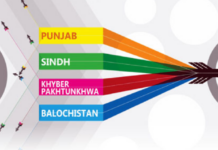ISLAMABAD: Pakistan’s exports to European countries saw a growth of 8.18% in the first nine months of the current fiscal year (July-March FY25) compared to the previous year, reaching $6.782 billion, up from $6.269 billion in the same period last year.
This growth was primarily driven by higher shipments to western and southern European states.
The increase in exports was attributed to a rise in demand for Pakistani textile and clothing products, especially in western, eastern, and northern European regions. Despite a decline of 3.12% in FY24, Pakistan’s exports to the European Union (EU) have shown a positive trend in FY25, supported by the Generalized Scheme of Preferences (GSP+) status, which grants duty-free access to many European markets.
Western Europe, including countries such as Germany, the Netherlands, France, Italy, and Belgium, accounted for the largest share of exports, with a 9.42% increase in shipments to $3.403 billion in 9MFY25, compared to $3.110 billion in 9MFY24. Notable increases in exports were seen in Germany (up 13.54% to $1.274 billion), the Netherlands (up 9.35% to $1.122 billion), and France (up 10.88% to $420.56 million).
Exports to northern Europe also rose by 17.49% to $559.52 million, while exports to eastern Europe grew by 15.57% to $539.21 million. However, exports to southern Europe showed only modest growth, increasing by 2.88% to $2.281 billion.
The UK, despite Brexit, continues to be a key market for Pakistani exports, with shipments rising 6.07% to $1.624 billion in 9MFY25, up from $1.531 billion last year.






















